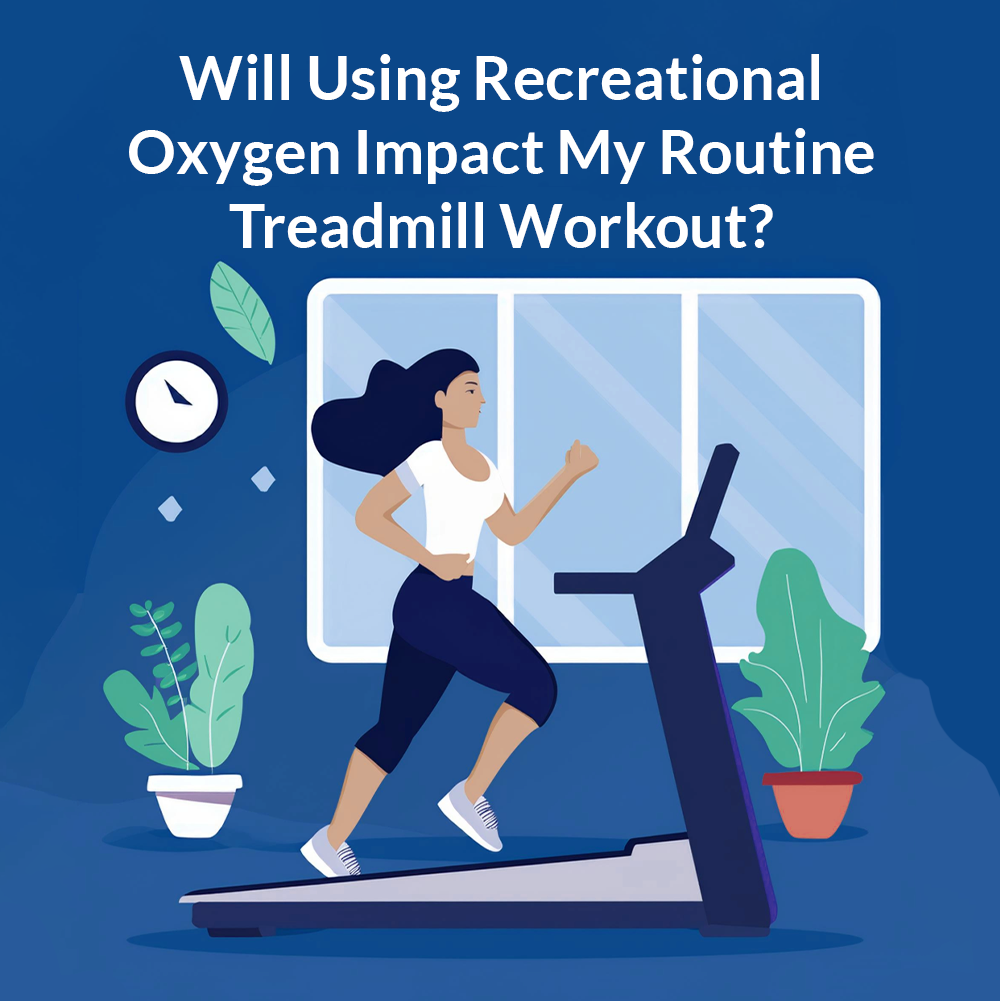Your Cart is Empty
Lee Wyton, BSc (Hons), MSc (Student in Sport Physiology) and the O+ Team |
"At the age of 66, I established my baseline of BPM and SpO2 pre-exercise and post-exercise at the end of my treadmill workout: 2 miles at 3.5 MPH at a grade of 8%. Then I measured BPM/ SpO2 in 5 min intervals after my workout. The next day, repeating the same routine but adding recreational O2 at 3 to 5 breaths every 5 minutes of recovery time, I found no significant improvement in recovery time based on BPM. I backpack at 11-12K elevation, so I'll be testing recreational O2 as a high altitude hiker and then provide my findings.” (Edited for continuity).
- D. K. H.
Thank you for reaching out to Oxygen Plus with your question about how supplementing with Oxygen Plus may or may not be impacting your routine exercise on a treadmill. We appreciate the detail you provided, and would like to share our thoughts and perhaps some suggestions on how to see results when using Oxygen Plus to help enhance recreational activity.
#1) Consider what you’re measuring.
Based on current literature, there is little or no association that hyperoxic mixtures promote the recovery of heart rate or BPM (beats per minute). Instead, measure your body’s oxygen saturation (SpO2).
#2) You may be measuring your BPM and SpO2 at a sub-optimal time.
Literature from White, Dawson, Landers, Croft and Peeling (2013) points out that administering an oxygen supplement during intervals of a physical effort yields optimum benefits to post-recovery oxygen saturation. This literature also highlights other benefits to performance abilities (output) when the oxygen supplement is used during physical activity, opposed to after. Therefore, you might see more dramatic results if you breathe Oxygen Plus during your workout.
#3) Maybe exercising more vigorously will show better results.
High intensity exercise, including efforts greater than 80% of an individual’s VO2max, (the maximum rate of oxygen consumption measured during incremental exercise) have been associated in the reduction of SpO2 (Oussaidene et al., 2013). Therefore, you would have to be exercising at this level, or, for prolonged periods, to receive a noticeable physiological benefit. This could be the clearest indicator of why supplementing with Oxygen Plus did not significantly affect your measurements.
Here are some suggestions for how you might want to try using Oxygen Plus to see some measurable, physiological results.
The most accurate form of oxygen saturation you could measure would be through a portable oximeter, which slides over the finger. (NOTE: Maintaining warmth in the fingers would give a more accurate reading, and wearing nail polish may result in an inaccurate reading.)
For example, measure your speed or distance and your time without any O2 supplement; and then compare and contrast those numbers to your speed or distance and time when you’ve been breathing Oxygen Plus. The use of an accelerometer (which can be expensive) can provide these outputs in numerical form; however, there are apps that achieve similar results and some may be free.
If you are able to provide us with numerical inputs of your pre/post heart rate and oxygen saturation, we could highlight whether or not the oxygen supplementation would have an effect based on the exertion of physical activity being performed.

Rest assured, supplementing with Oxygen Plus will yield some benefit to higher altitude hiking, and any activity at higher altitude for that matter, as witnessed by Hauseret. al. (2014). The benefit is not only physiological, but it is also demonstrated by how hard you feel your body is working (RPE or rate of perceived exertion). Hyperoxic supplements, such as Oxygen Plus, provide greater oxygenation of the arterial blood because more oxygen is being breathed (physically dissolved through the lungs).
We hope this helps shed a little light on how to measure, and get results, using Oxygen Plus for recreational activity at sea level and at higher elevation. Please reach out to us with more questions about how Oxygen Plus can help elevate your everyday experience.
White, J., Dawson, B., Landers, G., Croft, K., & Peeling, P. (2013). Effect of supplemental oxygen on post-exercise inflammatory response and oxidative stress. European Journal of Applied Physiology, 113(4), 1059-1067.
Oussaidene, K., Prieur, F., Bougault, V., Borel, B., Matran, R., & Mucci, P. (2013). Cerebral oxygenation during hyperoxia-induced increase in exercise tolerance for untrained men. European Journal of Applied Physiology, 113(8), 2047-2056.
Hauser, A., Zinner, C., Born, D. P., Wehrlin, J. P., & Sperlich, B. (2014). Does hyperoxic recovery during cross-country skiing team sprints enhance performance. Medicine & Science in Sports & Exercise, 46(4), 787-94.
